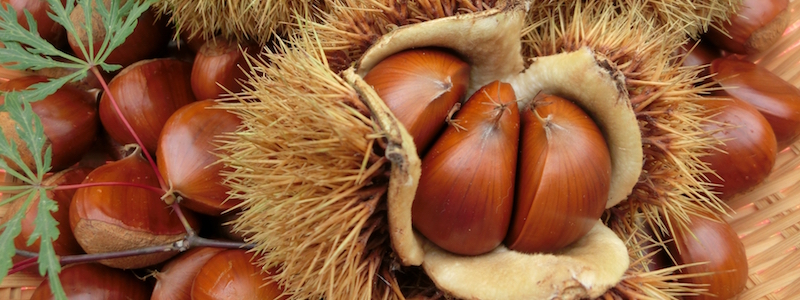Seasonality is an important aspect of Japanese culture, and in no area does it play a greater role than in the world of food and drink. The concept of “shun” (旬) refers to ingredients that are at their seasonal best, and the celebration of seasonality in cooking results in the popularity of different types of cuisine all year round. Read about some of the ingredients associated with autumn in Japan, and the dishes they are commonly used in, below.
Table of Contents
Vegetables and Mushrooms
Sweet potato
 Known as “satsumaimo” (サツマイモ, potato of Satsuma Province) in Japanese, sweet potatoes are a common sight in autumn. Street vendors sell baked “yaki-imo” whole in bags, and sweet potatoes are also ingredients in both sweet and savoury cooking.
Known as “satsumaimo” (サツマイモ, potato of Satsuma Province) in Japanese, sweet potatoes are a common sight in autumn. Street vendors sell baked “yaki-imo” whole in bags, and sweet potatoes are also ingredients in both sweet and savoury cooking.
Matsutake
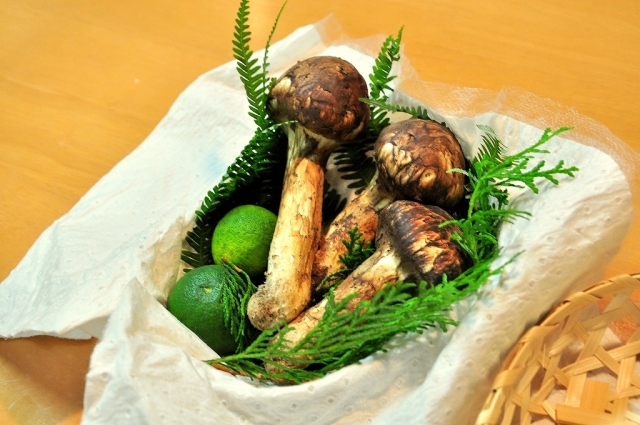 Matsutake mushrooms (松茸) are known to be difficult to cultivate, but are prized in Japan for their rich, “umami” flavour. Because they require very specific conditions in order to grow, the numbers harvested can vary greatly from year to year leading to fluctuating prices. As their flavour is quite strong, they are generally used sparingly. Matsutake should not be kept for more than around 10 days, as older mushrooms can cause serious food poisoning.
Matsutake mushrooms (松茸) are known to be difficult to cultivate, but are prized in Japan for their rich, “umami” flavour. Because they require very specific conditions in order to grow, the numbers harvested can vary greatly from year to year leading to fluctuating prices. As their flavour is quite strong, they are generally used sparingly. Matsutake should not be kept for more than around 10 days, as older mushrooms can cause serious food poisoning.
Satoimo (taro root)
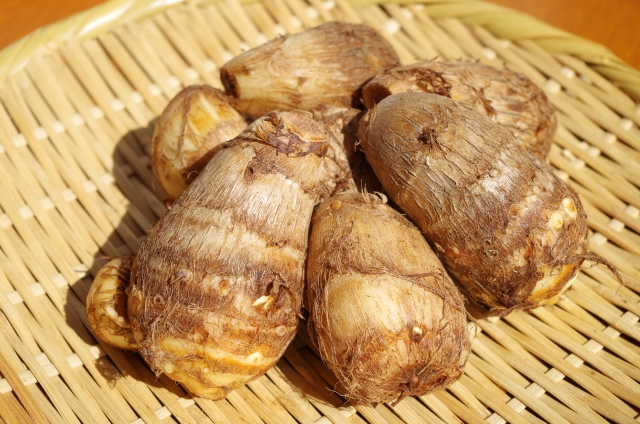 Satoimo (里芋), known as taro root in the west, is a kind of root vegetable commonly eaten in east Asia. Their rough husks should be washed thoroughly with a brush before peeling. Satoimo is very healthy, but it becomes somewhat slimy when boiled which puts some people off.
Satoimo (里芋), known as taro root in the west, is a kind of root vegetable commonly eaten in east Asia. Their rough husks should be washed thoroughly with a brush before peeling. Satoimo is very healthy, but it becomes somewhat slimy when boiled which puts some people off.
Kabocha (winter squash/pumpkin)
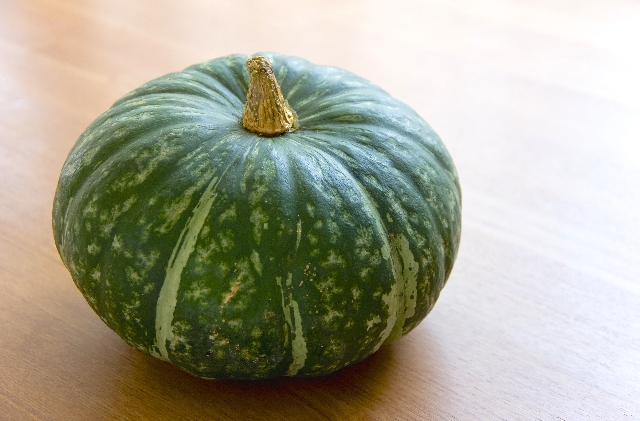 The “kabocha” (かぼちゃ) is often referred to as a Japanese pumpkin, and is a type of winter squash with tough green skin and orange flesh. They are typically sold whole, or in halves, quarters and slices. The green outer skin can be difficult to cut through, though heating in the microwave beforehand can help with this. When storing kabocha, removing the seeds and stringy insides can allow you to keep it for longer without rotting.
The “kabocha” (かぼちゃ) is often referred to as a Japanese pumpkin, and is a type of winter squash with tough green skin and orange flesh. They are typically sold whole, or in halves, quarters and slices. The green outer skin can be difficult to cut through, though heating in the microwave beforehand can help with this. When storing kabocha, removing the seeds and stringy insides can allow you to keep it for longer without rotting.
Fish and Seafood
Chum salmon
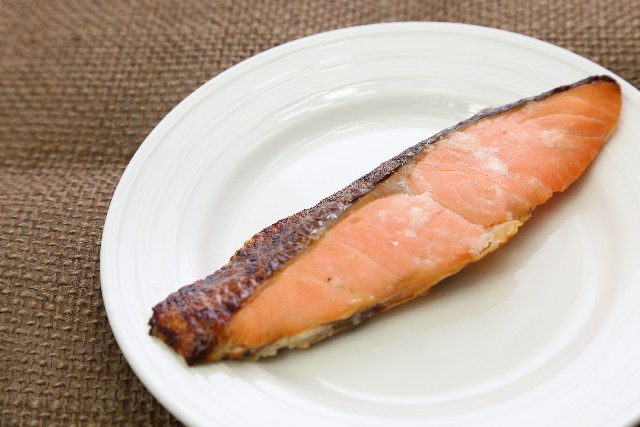 A variety of Pacific salmon, the chum salmon is known in Japan as “sake” (鮭). The flesh of the chum salmon is generally less fatty than other salmon varieties, resulting in a distinctive texture.
A variety of Pacific salmon, the chum salmon is known in Japan as “sake” (鮭). The flesh of the chum salmon is generally less fatty than other salmon varieties, resulting in a distinctive texture.
Sanma (Pacific saury)
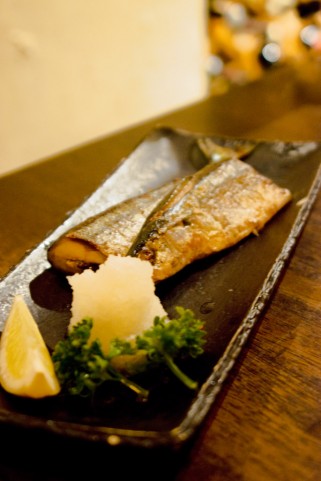 The Pacific saury, called “sanma” (秋刀魚) in Japan, is one of the foodstuffs most strongly associated with autumn. A sanma festival is held every year in Tokyo’s Meguro Ward. Sanma are popular in autumn when their fat content is high, and often sprinkled with citrus juice such as lemon juice, sudachi juice (see below) or ponzu.
The Pacific saury, called “sanma” (秋刀魚) in Japan, is one of the foodstuffs most strongly associated with autumn. A sanma festival is held every year in Tokyo’s Meguro Ward. Sanma are popular in autumn when their fat content is high, and often sprinkled with citrus juice such as lemon juice, sudachi juice (see below) or ponzu.
Fruit, Seeds and Nuts
Sudachi
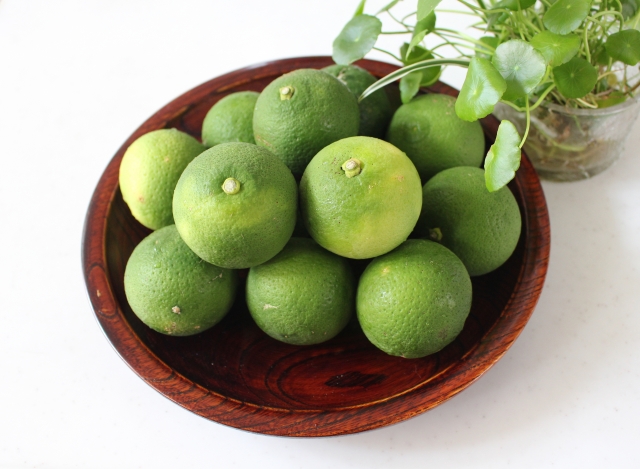 Sudachi (スダチ) are a kind of citrus fruit native to Tokushima Prefecture on the island of Shikoku. Similar to a small, round lime in appearance, sudachi are harvested from August to mid-October.
Sudachi (スダチ) are a kind of citrus fruit native to Tokushima Prefecture on the island of Shikoku. Similar to a small, round lime in appearance, sudachi are harvested from August to mid-October.
Kuri
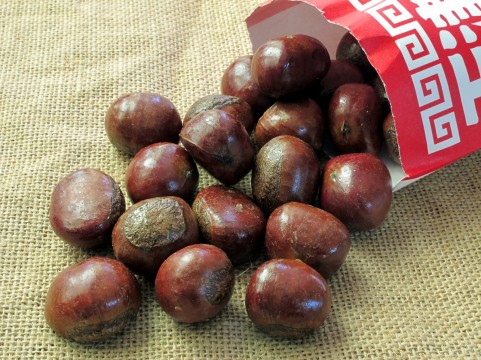 Japanese chestnuts, or kuri (栗), are another foodstuff strongly associated with autumn. In Japan, chestnuts are rarely sold roasted as they are in other countries. Instead, they are used in a number of seasonal dishes, or as an ingredient in sweets.
Japanese chestnuts, or kuri (栗), are another foodstuff strongly associated with autumn. In Japan, chestnuts are rarely sold roasted as they are in other countries. Instead, they are used in a number of seasonal dishes, or as an ingredient in sweets.
